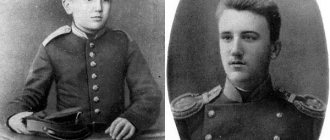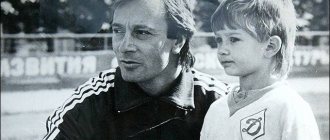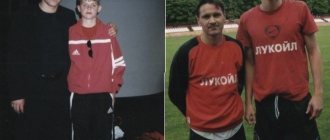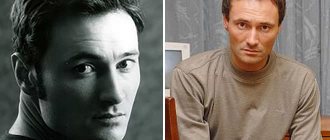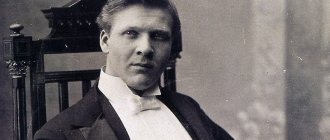Conspiracy in scientific circles
By and large, we know nothing about this unique person. Russian academic circles have always been wary of Dmitry Ivanovich Mendeleev. Foreign colleagues nominated him for the Nobel Prize three times. And not once did Russian scientists support him.
The reason is simple - he was too different from them. Was different. A figure of incomprehensible proportions. His approach to scientific research was also different. According to Dmitry Ivanovich, everything that scientists create should contribute to the growth of industry, the economy and the well-being of Russia. He saw no other purpose in life.
Therefore, in the scientific circles of Russia, what would later be called a “conspiracy” was born. In 1907, the newspaper “Novoe Vremya” reported: “The Council of the Russian Pharmaceutical Society in Moscow found that Mendeleev as a scientist has not existed for a long time, but Mendeleev the official existed, and that pharmacists should refuse to honor him.”
Later there were other unpleasant statements that diminished the significance of his numerous works. The goal of the conspiracy was achieved - only three facts remained in the memory of many about Dmitry Ivanovich’s activities: he saw the periodic table in a dream, invented vodka, and made suitcases.
The beginning of the scientific path
In 1847, Mendeleev’s father died, and in 1848 the factory burned down. Therefore, Maria Dmitrievna, who had long noticed special abilities in her son, left Tobolsk together with her younger children. In 1850, Dmitry Ivanovich Mendeleev entered the Main Pedagogical Institute in St. Petersburg in the department of natural sciences of the Faculty of Physics and Mathematics. A few weeks after this event, Maria Dmitrievna died. By the way, in the first year of study, student Dima failed in almost all exams. And this is what came of it, so don’t rush to give up on yourself.
In 1855, after graduating from the institute, Mendeleev fell ill with tuberculosis, which forced him to go to Crimea. There he goes to work at the Simferopol men's gymnasium, where he becomes a senior teacher. 2 years after a complete recovery, Dmitry Mendeleev returned to St. Petersburg, where a year later he received a master’s degree in chemistry (defending a dissertation entitled “Structure of Silica Compounds”).
It's time to restore justice
Let's try to list Dmitry Ivanovich's achievements as briefly as possible. Why short? Because a multi-volume novel could be written about his life (not only his scientific life). She was so exciting and amazing. It's time to unbiasedly figure out: who's who? Who is Dmitry Ivanovich Mendeleev?
Encyclopedist scientist - wrote 47 articles on various scientific topics in the Brockhaus and Efron encyclopedia. Including three culinary ones. Chemist - devoted his entire life to the study of chemical processes. Only the Periodic Table of Chemical Elements was 25 years old! Physicist - worked in physics laboratories abroad. Metrologist - developed standards for many chemical and physical instruments that are still used today. Economist - conducted research and prepared hundreds of articles on the economic development of Russia and its future.
Scales designed by D. I. Mendeleev for weighing gaseous and solid substances
Dmitry Ivanovich can be called a technologist: he invented smokeless gunpowder - eight years of complex research and two foreign business trips. He was also a geologist, meteorologist, oilman (he managed to quarrel with the Nobel brothers, who were conscientious about Russian deposits), teacher, lecturer, aeronaut, instrument maker, professor at the Imperial St. Petersburg University, corresponding member of 42 academies around the world!
And, yes, he was also an official with the rank of “privy councilor,” which was constantly reproached by other scientists who did not have such official recognition of their merits.
Mendeleev Dmitry Ivanovich short biography
In 1850, at the age of 16, Dmitry began his studies at the Main Pedagogical Institute in St. Petersburg. A month and a half later, his mother died, and the young man was left without relatives and friends, as well as without property. He studied with great interest. Chemistry and mineralogy were his favorite subjects. Dmitry was especially fascinated by the huge variety of chemical transformations and compounds , which were based on only a few dozen elements. In the last year, for his final dissertation “Isomorphism” on the chemical processes accompanying the formation of crystals, Dmitry Ivanovich was awarded the Mendeleev gold medal. The photo is presented below:

In the fall of 1856, the future discoverer of the Periodic Law became a professor at the Institute of Technology and a private assistant professor at the university in St. Petersburg. From 1859 to 1861 he worked in Heidelberg (Germany). Having his own laboratory, he conducted scientific research in an as yet undefined direction. However, after the International Congress of Chemists in 1860 in Karlsruhe, the scientist came to the conclusion that he should work in the direction of atomic masses (at that time the term “atomic weight” was used).
In 1862, the inventor, at the persuasion of his sister, married Feozva Nikitichnaya Leshcheva . Mendeleev never got along with his first wife. The children, however, enjoyed their father's special tenderness. Soon he bought the Boblovo estate, which reminded him of his native Tobolsk. The meager lands of those places were well suited for his agricultural experiments. He began analyzing fertilizers and conditions affecting the harvest, and taught peasants how to effectively farm. As a result, the amount of harvest, given the scarcity of land, was surprisingly large.

The results of Mendeleev's doctoral dissertation on mixing water and ethyl alcohol, which the scientist defended in 1865, formed the basis of alcoholometry in Holland, Austria, Germany and Russia.
Further scientific research led to the creation of the Periodic Table in early 1869. Most of the world's academies elected the creator of the table of elements as a member, and the most famous universities as an honorary doctor.
The marriage of the great inventor was not happy, and in the spring of 1877 he started an affair with a 17-year-old artist. After 3 years, the scientist finally separated from his family, and in April 1882 they got married. Since then, artists - Repin, Yaroshenko, Kuindzhi - often began to visit the house.
Since 1892, the great chemist became the main custodian of the depot of weights and measures . And in a matter of years he turned this institution into a large scientific center. It was not for nothing that from a young age he loved precise measurements and sensitive instruments.
On January 20, 1907, Mendeleev died of pneumonia in St. Petersburg. A short biography of the great scientist testifies to his true devotion to his homeland and science. Dmitry Ivanovich was buried at the Volkovsky cemetery.
Seventeenth child in the family
Dmitry Ivanovich was born in Tobolsk, in the family of the director of Tobolsk schools. He was the seventeenth (youngest) child in the family. Eight of his brothers and sisters died in infancy. Three - immediately after birth, before baptism. The boy was unlucky - his father went blind the year he was born. The family lived very modestly on a small pension, spending part of the funds on treatment. An operation in Moscow restored my father’s vision, but he was unable to return to work.
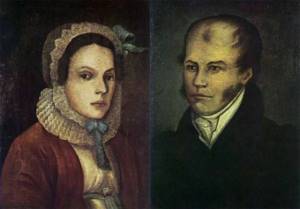
Maria Dmitrievna Mendeleeva (née Kornilieva) and Ivan Pavlovich Mendeleev
All worries about the family fell on the mother's shoulders. Maria Dmitrievna was the daughter of a wealthy Siberian Old Believer industrialist who believed that education was of no use to women. Therefore, he educated his sons, but forbade his daughter to go to the gymnasium. The girl learned to read and write only thanks to her brothers.
It was the mother who became the support of the family. She educated all the children and took care of her sick husband. To help the family, Maria Dmitrievna’s brother transferred the glass factory to her management. And a woman without education easily managed the glass production, planned the work of the enterprise and sold the products.
Trouble has come - open the gate
But the misfortunes did not subside: after the death of the head of the family, the plant burned down, and the Mendeleevs moved to their relatives in Moscow with the sole purpose of giving their youngest son a decent education, because Dmitry had amazed his relatives with a thirst for knowledge since childhood. Celebrities often gathered at his family's house. This is how Dmitry met Pushkin, who returned from the Caucasus, Gogol, Glinka, Baratynsky and many other writers, artists, composers, scientists...
But you don’t need to think that Dmitry was a good boy. He was just as hooligan as other boys and sometimes got into fights. Already at an advanced age, when the scientist was ill, he complained to his family: “My whole body aches, like after a fight on the school bridge.” Even in his declining years, he recalled these difficult years with a smile.
Youth
In 1855, Mendeleev graduated with a gold medal from the department of natural sciences of the Faculty of Physics and Mathematics and was appointed senior teacher of natural sciences at the Simferopol men's gymnasium.
Having had constant health problems since childhood, during this period of his life he became especially ill, and some doctors believed that he did not have much time left to live. On the recommendation of a doctor he knew, he was examined that same year by the outstanding Russian surgeon Pirogov, who said that the young man would far outlive himself. This gave the future scientist confidence that fate would favor him.
In 1856, Mendeleev brilliantly defended his dissertation “for the right to give lectures” - “The structure of silica compounds.” At the end of January, Mendeleev’s Ph.D. thesis “Isomorphism in connection with other relationships of crystalline form to composition” was published as a separate edition. On October 10, he was awarded a master's degree in chemistry.
In January 1857, Mendeleev was confirmed as a private associate professor at the Imperial St. Petersburg University in the Department of Chemistry.
Personal life: two wives
They say correctly: living life is not a field to cross. Even great people are not immune to mistakes. Dmitry Ivanovich’s first wife was the stepdaughter of the poet Nikolai Ershov, author of the fairy tale “The Little Humpbacked Horse.” She was eight years older than her husband. Despite three children, family life did not work out.
After the separation, the scientist lived and worked in Germany for several years, where he had another daughter. Dmitry Ivanovich did not formalize the marriage with her mother, but he always recognized his daughter and took care of her.
The second time Mendeleev met his love was when he was 42 years old. His chosen one, the daughter of a Don Cossack Anna, was only sixteen years old. In his second marriage, Dmitry Ivanovich also had three children. The eldest daughter in this marriage, Lyubov, became the wife of the famous poet Alexander Blok.
Of course, you can moralize: “All men are the same!”, but you don’t want to - life is much more complicated than television series. Moreover, among scientific research, business trips, discoveries, Dmitry Ivanovich always found time for all the children and provided for them with dignity.
From school teacher to privy councilor
Let's first figure it out: who is a Privy Councilor?
According to the Table of Ranks, this is the third civilian rank. If translated into military ranks, this is the level of lieutenant general. How did a graduate of the Faculty of Physics and Mathematics of the Main Pedagogical Institute in St. Petersburg achieve such a high position?
This career began from school. Mendeleev was only 22 years old when he received an appointment to the Simferopol men's gymnasium, then transferred to the Odessa Lyceum. At the same time, Dmitry worked on his dissertation and, at the age of 23, successfully defended it and received the right to lecture to students.
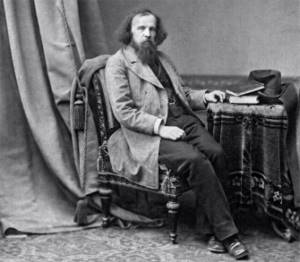
A year later he received the title of private assistant professor and began teaching at St. Petersburg University in the Department of Chemistry. It was a brilliant start. By the way, Dmitry dedicated his first scientific work to his mother. The introduction to the dissertation sounds like a declaration of love to Maria Dmitrievna, who dedicated her life to her youngest son.
Biography of Mendeleev: childhood, education
Dmitry is the 17th child in the Mendeleev family. Father - Ivan Pavlovich - ran a gymnasium in Tobolsk. Mother - Maria Dmitrievna - devoted herself to the home and children. Mendeleev's date of birth is January 27, 1834. That same year, my father lost his sight and soon resigned.
At the age of 10, Dmitry lost his father, all worries about the family fell on his mother’s shoulders. She began managing the glass factory of her brother, who lived in Moscow. The factory barely provided food.
Mendeleev was not very successful in his studies as a child; in the gymnasium he was only interested in mathematics and physics. But the mother saw the special talent of her youngest son, so after high school she aimed him at obtaining a higher education. She found the means for this by liquidating the enterprise. A few weeks after her son was enrolled in university, she died.
At the age of 21, the young man graduated with special honors (gold medal) from the Main Pedagogical Institute in St. Petersburg, and briefly taught in educational institutions in Simferopol and Odessa. During this time, he wrote a dissertation, received a master's degree, and at the age of 23 became a private assistant professor at the capital's university.
Unusual Scientist
Russia has never seen such scientists before. He did not make his discoveries in the quiet of his offices. If you need to take to the skies in a hot air balloon, please go to the Ural factories with joy, and tour the gunpowder factories of Europe with pleasure!
I would like to tell you about the balloon in a little more detail so that the character of Dmitry Ivanovich becomes clear. There was a flight ahead to study the corona of the sun. Two people were supposed to fly in the gondola: a pilot and a scientist. But the day before it had rained, the balloon got wet and he was unable to lift the two. Already sitting in the gondola, Dmitry Ivanovich asked the pilot how to control the balloon - he went on the flight alone. Mendeleev carried out all the research, flew to the destination and landed the ball on the ground himself. Since then, Mendeleev’s passion for aeronautics began: balloons and the first airplanes.
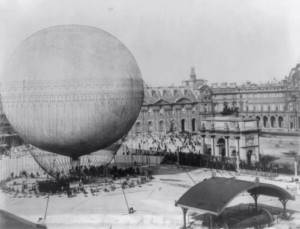
A large tethered balloon by A. Giffard, on which D. I. Mendeleev ascended in 1878, in Paris
Dmitry Ivanovich’s second hobby is shipbuilding and the development of the northern sea route. He planned the expedition, proved to the government the need to develop the northern territories, and created a project for the first Russian Arctic icebreaker. Mendeleev popularized this topic in scientific circles, preparing 36 works about the Arctic!
Preparing for war
The end of the 19th century was marked by a tense international situation. The upcoming war was talked about not only at the General Staff, but also in social drawing rooms. Mendeleev was asked to study promising gunpowders for long-range and naval artillery. Dmitry Ivanovich agreed, and together with a small team of explosives specialists he left for Europe. He was given the task of familiarizing himself with how gunpowder production was established in other countries and learning about the most promising developments. Mendeleev visited London and talked with scientists and technologists. He even managed to get into the enterprise and see the production with his own eyes!
In France, the Russian delegation was not allowed anywhere for a long time. Negotiations on cooperation were conducted at the highest level (formally Russia and France were allies). They managed to convince the French to let Mendeleev into the gunpowder factory. Dmitry Ivanovich was even given a sample of the new smokeless gunpowder. But later, in Russia, it turned out that the cunning French slipped a defective sample to our chemists as a sample.
After returning from Europe, Dmitry Ivanovich is engaged in his own experiments. The result exceeds all expectations - the new smokeless powder is many times superior to foreign models in quality, reliability and cost!
Black gold of Russia
A separate story in the life of Dmitry Ivanovich is an open confrontation with the Nobel brothers. Ludwig Nobel planned to buy up oil fields in Baku for next to nothing and began spreading rumors about the depletion of oil reserves. Mendeleev managed to thwart this scam: with the help of calculations and geological surveys, Dmitry Ivanovich proved that the volume of black gold reserves in Baku was very large, and developed a project for the first oil pipeline to the central part of Russia. The Nobels criticized Mendeleev's idea, and a few years later they passed it off as their own.
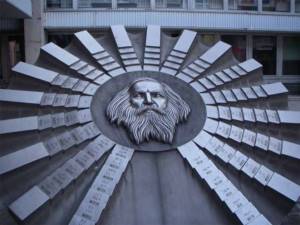
Relief on the facade of one of the faculties of the University of Technology. Bratislava
Dmitry Ivanovich was an enthusiastic person. He carefully developed each of his ideas. So this time he convinced the government to send him to America to get acquainted with how the production and refining of oil overseas was carried out. He visited many factories, studied the technology and returned to Russia with a huge package of proposals for organizing oil fields in our country, while simultaneously making several scientific discoveries. “Oil is not fuel...” said Mendeleev. “You can drown with banknotes!”
Joke
In the old days there was a joke that Dmitry Ivanovich was fond of making suitcases. This was Mendeleev’s hobby. One day, when he came to Gostiny Dvor for material, someone asked the seller behind his back: “Who is this?” The answer was: “This is a famous suitcase maker!”
But this is just an anecdote. In fact, even in his youth, Dmitry Ivanovich learned bookbinding and suitcase crafts. Since he had many scientific works, books, business papers, articles and lectures, all his life he independently made folders and boxes for his archive. So the stories about Mendeleev’s hobby are echoes of an old joke.
Not just chemistry
Mendeleev was fond of photography (he even wanted to leave science at one time and open a photo studio) and collected albums with works of art, because the paintings were beyond his means: for example, “Moonlit Night on the Dnieper” by Kuindzhi cost 5 thousand rubles, and the salary of a chemistry professor per year was 3 thousand. There is a legend that Dmitry Ivanovich glued suitcases and almost put them up for sale in Gostiny Dvor. It’s hard to say whether this is true, but the table made by the professor’s hands has survived. And thanks to him, the first electric street clocks appeared in St. Petersburg.

Periodic cup. (Mendeleev Museum-Archive. Author: Anna Vlasova)
From his high school days, Mendeleev fell in love with rolling cigarettes. When they told him that smoking was harmful, the professor replied: “It’s all nonsense. I passed the smoke through a cotton swab containing bacteria. Not all bacteria died." But it was his diseased lungs that brought him to the grave: he died of inflammation, six days before he was 73 years old.
The excursion for the author of the article was conducted by Nikolai Pozdnyakov, a researcher at the D. I. Mendeleev Museum-Archive at St. Petersburg State University.
